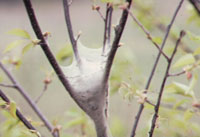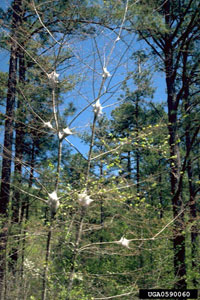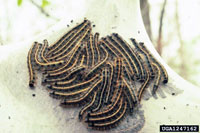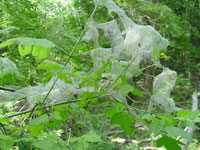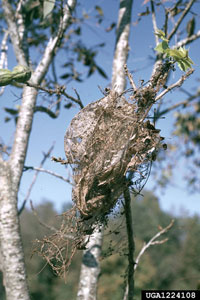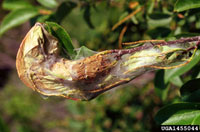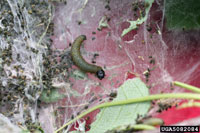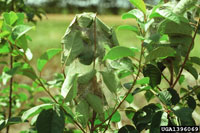Extension > Garden > Diagnose a problem > What's wrong with my plant? > Deciduous Trees > Prunus > Webbing of leaves or on branches
Prunus > Leaves > Webbing of leaves or on branches
1 of 3
Eastern tent caterpillar
Malacosoma americanum
- Larvae form webs at branch forks, congregating in web only to feed on young leaves
- In high populations, tree is covered in webbing and defoliated
- White stripe running length of black body with bright blue spots; almost 2 inches long
- Damage occurs in May and June
- More information on Eastern tent caterpillar
2 of 3
Fall webworm
Hyphantria cunea
- Produces silken webbing that covers the ends of branches; silken tent filled with frass and leaf segments
- Chews entire sections of leaves, leaving major veins and can defoliate trees in high infestations
- Yellowish or greenish with long, fine white hairs with two rows of black spots down its back; approximately 1" when fully grown
- Damage occurs from late July through September
- More information on Fall webworm
3 of 3
Uglynest caterpillar
Archips cerasivorana
- Spin webs that become filled with frass and leaf pieces
- Larvae eat leaves and can defoliate branches
- Up to 1 inch long; black head and yellowish to dark green body
- Cherry trees are preferred hosts
- More information on Uglynest caterpillar



